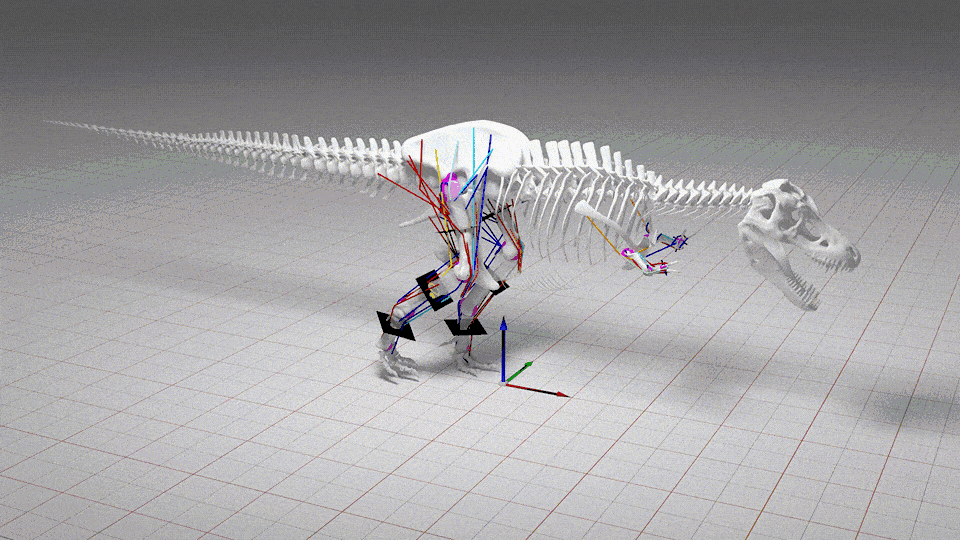When you buy through inter-group communication on our site , we may earn an affiliate perpetration . Here ’s how it work .
Preserved inside a piece of amber , a tick adhere to a dinosaur plume provides the first direct evidence that these bloodsuckers parasitized dinosaur 99 million days ago .
Scientists have speculated thatfeathered dinosaurslikelyhosted leechlike blighter , as birds do today . And tick find in amber close resemble innovative ticks , propose that they had similar leechlike habits . But there were no fossils that straight off link dinosaur to the tiny arthropod that may have feed on them .

About 99 million years ago, amber entombed a tick grasping a dinosaur feather.
Now , scientists are reporting in a Modern study proof of one such relationship — an unripened tick holding tight to a feather , freeze in time one thousand thousand of long time ago inside a petite rosin tomb . This striking uncovering was described alongside other example of ticks in this hardened Sir Herbert Beerbohm Tree sap , which provided extra grounds that these worm banquet on dinosaur . [ In Photos : Amber Preserves Cretaceous Lizards ]
The feather - gripping tick and its fellows were notice inside four polished piece of Burmese amber , observe in the southeasterly Asiatic country of Myanmar . Private collectors who acquired the amber noticed the piece carry particles that could be of scientific interest , and so they shared them with palaeontologist , study Colorado - writer and paleobiologist Ricardo Pérez - de la Fuente , a research feller at the Oxford University Museum of Natural story in England , told Live Science .
It was n’t until the researchers examined the amber piece more closely that they realized a " particle " in one of them was a puerile tick , or nymph , snarl with a dinosaur feathering . Such a discovery — physically linking a parasite to its innkeeper — is exceptionally rare in the fossil record , Pérez - de la Fuente said .

Amber pieces holding preserved ticks lie next to an extant hard tick for comparison (tick is 0.2 inches — 5 millimeters — in length).
The tick , identified asCornupalpatum burmanicum , belongs to a mathematical group commonly cognize today as grueling ticks , which have a shield - similar structure on their backs that protects them from being crushed by their hosts . During the young houri stage , these ticks are " voracious blood feeder , " which suggest to the researchers that the feather in the check ’s grasp derive from its repast ticket , Pérez - de la Fuente aver .
And because the gold go steady to the middle of theCretaceous period , that reign out the possibility that the feather belong to a modern bird , which appeared much later in the evolution of theropod dinosaurs , he added .
" We ’re always seeking direct evidence , but that ’s very scarce . That ’s why our finding is so important — this is provide the first direct evidence that ticks parasitized feathered dinosaurs , " he said .

Two adult maleDeinocroton draculiticks were preserved together.
Fossilspreserved in amberretain their 3D signifier and exhibit remarkable piano - tissue details that are typically lost during fossilisation in rock candy , lending them " odd tone , " Pérez - de la Fuente told Live Science .
" We can see the tiniest item — hairs , even teeth preserve in the mouthpart of [ the ] tick , the structures that come home the tissues and allow the check mark to cast anchor to the pelt of the host , " he said .
Amber is also alone at capturing portions of the environment in anancient ecosystem , allowing scientists to see metal money interactions as they appeared in life . In this case — a tick clutching a feather — that record would undoubtedly have been drop off had the feathering been preserved as a rock impression , Pérez - de la Fuente sound out .

And as ticks and other types of parasites spend most of their life riding around on their hosts ' bodies , they were less potential than other insects such as pismire and termites to be trapped in ancient resin and entombed in amber — which makes this find even more extraordinary , Pérez - de la Fuente said .
Other gold pieces depict in the study declare previously unidentified ticks that the scientist dubbedDeinocrotondraculi — " Dracula ’s awful tick " — one of which was engorged with line to about eight times its normal size of it . Though these tick are isolate from their hosts , the researchers observe minute hairs impound to the ticks ' bodies belong to overhang larvae that are often found in wench ' nests , where they feed on caducous feathers . This suggests that the ticks last alongside the beetles , perhaps ina dinosaur ’s nest , and that they likely also eat on feathered dinosaurs , the study authors report .
Additionally , these findings hint at how some types of transmittable diseases may have circularize among feathered dinosaurs , the research worker wrote in the study . Ticks today are acommon disease vectorfor mammal , birds and reptiles , and it is potential that millions of years ago , check could also have sway disease - make bacterium between the hosts that they parasitized , the scientists concluded .

The finding were print online today ( Dec. 12 ) in the journalNature Communications .
Original article onLive Science .














